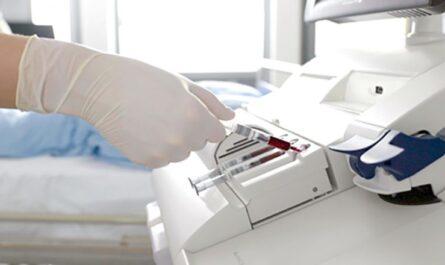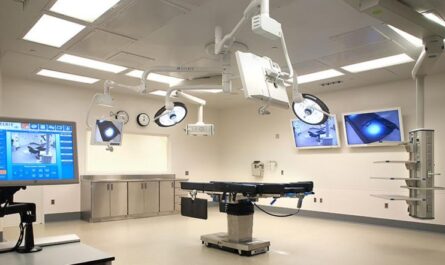Dermatoscopy, also known as dermoscopy, is a non-invasive diagnostic technique that allows skin lesions to be examined using a dermatoscope. A dermatoscope is a hand-held device that shines polarized light onto the skin and makes subsurface structures visible. This aids in the detection of signs not visible to the naked eye. Dermatoscopy has emerged as an invaluable diagnostic tool for dermatologists that improves the accuracy of diagnosing melanomas and other pigmented skin lesions.
What is a Dermatoscope?
It contains a magnifying lens and a source of polarized light transmitted through the lens onto the skin surface. This allows visualization of subsurface skin structures not visible by the naked eye.
Modern dermatoscopes use cross-polarized illumination whereby polarized light is shone through linearly polarized filters at the skin surface. Thisfilters out reflected surface light, increasing image contrast and minimizing skin gleam. Some advanced dermatoscopes incorporate integrated dermoscopic imaging that allows digital documentation and archival of dermoscopic findings.
Structures Visualized With Dermatoscopy
Through visualization of specific subsurface structures, dermatoscopy helps in the diagnosis of various pigmented and non-pigmented skin lesions. Some key structures that can be visualized include:
– Globules and Dots: Brown globules are aggregates of melanin-containing macrophages seen in melanocytic lesions. Brown dots or globules usually indicate a melanocytic lesions like nevi or melanoma.
– Streaks: Linear structures seen as streaks or extensions from the pigmented network are found in melanocytic lesions and indicate malignancy if asymmetric, irregular or variable in shape and width.
– Pigment Network: Seen as pigmented lines forming a meshwork or pigmented dots connected by lines which is characteristic of common acquired melanocytic nevi. Loss or fragmentation of network suggests malignancy.
– Blue-white Veil: Nonpigmented structureless area caused by backscattering of light by collagen bundles below the stratum corneum seen in early melanoma.
– Ulceration: Surface defect or erosion indicates disruption of epidermis typically seen in invasive melanoma.
Benefits of Dermatoscopy
The key benefits of using Dermatoscopy in skin examination includes:
– Improved diagnostic accuracy: Studies have shown dermatoscopy increases the diagnostic accuracy of melanocytic lesions compared to clinical examination alone from 50-60% to over 90%. This significantly decreases unnecessary excisions.
– Early detection of melanoma: Structures visible on dermatoscopy like blue-white veil, regression structures or asymmetric streaks indicate melanoma at an earlier, thinner stage improving prognosis.
– Monitoring of lesions: Dermatoscopy allows monitoring of the evolution of lesions over time. Changes in dermoscopic patterns indicate evolution towards malignancy promptingearly biopsy.
– Narrowing the differential diagnosis: Specific dermoscopic patterns are associated with certain skin lesions allowing a focused differential and targeted biopsy of suspicious lesions.
– Improved communication: Dermatoscopy findings enable clear communication between dermatologists for second opinions or teledermatology guidance and with pathologists examining biopsies.
Applications of Dermatoscopy
Dermatoscopy finds extensive clinical applications and is considered a essential tool for dermatologists in their daily practice for diagnosis and management of various pigmented and non-pigmented skin lesions:
– Melanocytic lesions: Diagnosis of common acquired nevi, dysplastic nevi or early melanoma based on characteristic patterns. Monitoring of changing nevi.
– Non-melanocytic lesions: Diagnosis of basal cell carcinoma, seborrheic keratosis, dermatofibroma based on specific features seen.
– Inflammatory dermatoses: Patterns seen in psoriasis, pityriasis rosea and lichen planus.
– Infectious lesions: Diagnosis of tinea versicolor, candidiasis and pseudoainfection.
– Hair and scalp: Features of trichoscopy help diagnose alopecia, tinea capitis and pediculosis.
– Nail apparatus: Subungual hematoma, melanoma or other disorders under nails.
– Teledermatology: Store-and-forward or real-time teledermatology exchanges incorporating dermoscpic images.
In summary, incorporation of dermatoscopy into clinical practice has revolutionized the diagnosis and management of numerous dermatological disorders. It is a valuable low-cost diagnostic adjunct that improves accuracy and allows for early detection and timely treatment. Dermatoscopy training should be incorporated into dermatology education programs and curriculums.
Note:
1. Source: Coherent Market Insights, Public sources, Desk research
2. We have leveraged AI tools to mine information and compile it




